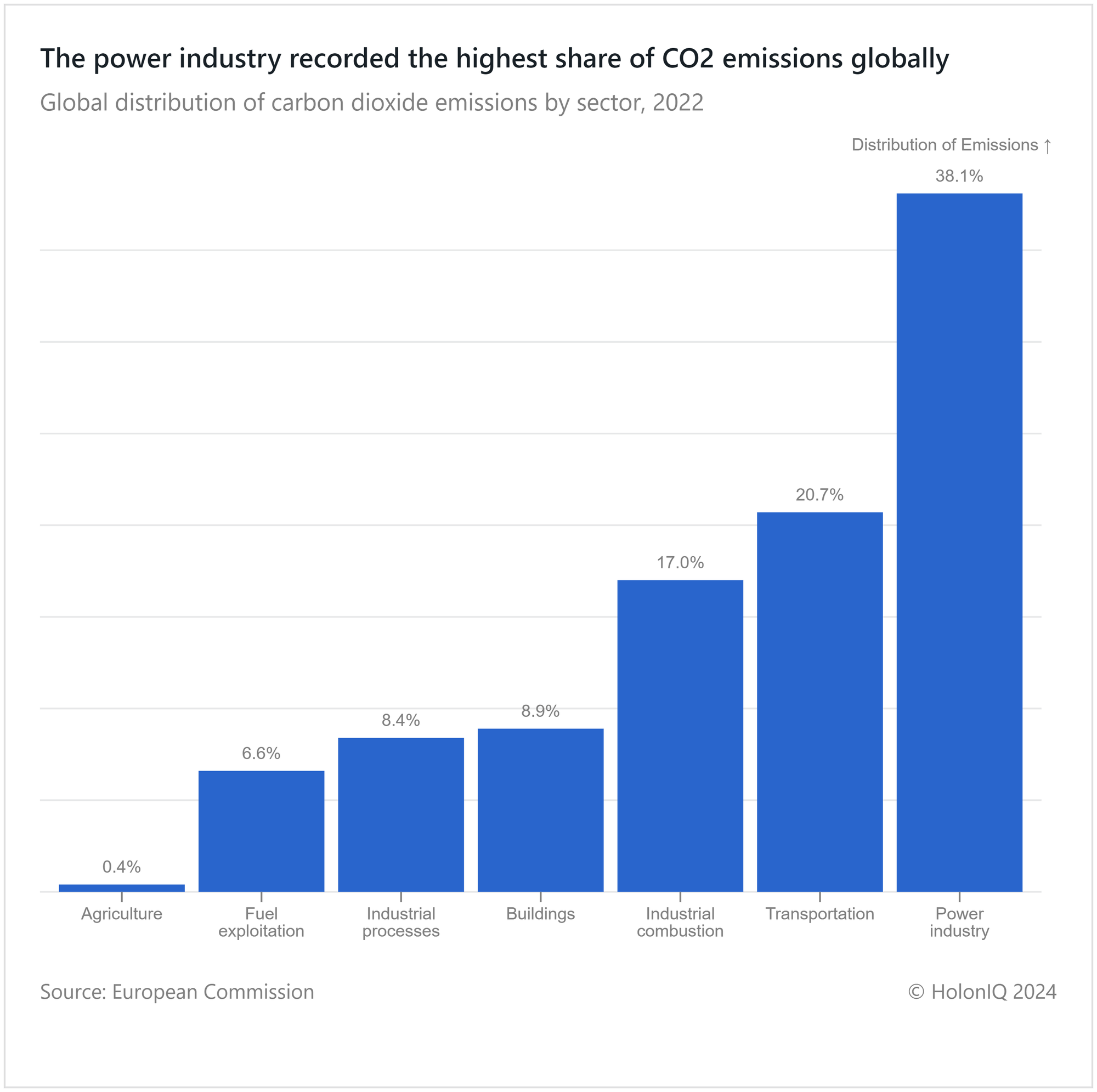🌳 38% Power Industry Emissions. Student Debt. Recyclable Raw Materials.
Chart of the Day #128 looks at Student Debt, Carbon Emissions and Recyclable Raw Material Trade.
Hola 🌞
Japan has issued $11 billion in Climate Transition Bonds to fund initiatives aimed at shifting the nation to a more environmentally sustainable economy. China is making efforts to recruit more students from France in order to strengthen its position and influence on the global stage.
Today's Topics
💰 Student Debt. Princeton graduates have the lowest debt among Ivy League universities
🌳 Carbon Emissions. The power industry accounted for 38% of CO2 emissions globally
♻️ Recyclable Raw Materials. EU recyclable raw material imports exceed exports by 10%
For unlimited access to over one million charts, request a demo.
💰 Princeton Graduates Have Lowest Debt Among Ivy League Universities

In 2022, students graduating from Princeton University had the lowest average total debt among Ivy League schools, at $12,500. This was significantly lower than the highest average debt of $28,400 at Cornell University, over 2.3 times higher. The other Ivy League schools fell in between. While average student debt continues to rise in the United States, Ivy League graduates generally hold lower debt burdens due to greater access to financial aid.
🌳 The Power Industry Accounted For 38% of CO2 Emissions Globally

The power industry is the largest contributor to global CO2 emissions, accounting for 38% of the total CO2 emissions, followed by transportation at 20.7%. These figures reflect the influence of population growth and globalization. In contrast, the agricultural sector contributes the least to global emissions, at just 0.4%.
♻️ EU Recyclable Raw Material Imports Exceed Exports by 10%
The European Union (EU) has historically maintained a net surplus of imports of recyclable raw materials. In 2005, imports exceeded exports by more than 20 million tons. However, this trade imbalance has since narrowed considerably. Export volumes have grown by 60% since 2005, while imports have decreased by 5% during the same period, contributing to a more balanced trade dynamic in this sector. Imports were greater than exports by 10% in 2021.
Like getting this newsletter? For unlimited access to over one million charts, request a demo.
Thank you for reading. Have a great week ahead!
Have some feedback or want to sponsor this newsletter? Let us know at hello@holoniq.com
